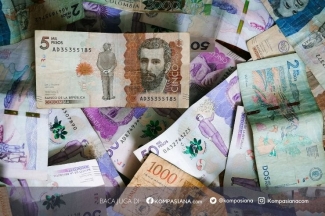The regulation of trade is changing over time. Both of individuals and businesses around the world have more intense and fierce competition as a result of free trade agreement. One of the key drivers to face on that agreement is encourage human’s creativity and innovation on the creative economy. A person who firstly introduced the term of a creative economy is John Howkins in his book The Creative Economy: How People Make Money From Ideas (2001). He defined the creative economy as “the transactions of creative products that have an economic good or service that results from creativity and has economic value” (CNSLC, 2012, p. 8). The creative economy is not a single expressway, but it can be potential for speeding sectors of the world economy up, not just in income generation sector but also for job creation and export earnings. In this light, it is important to explore more about creative economy in Indonesia and its outcomes.
The importance of encouraging industry on creativity sources come into existence in 2005 by the ex-president of Indonesia, Susilo Bambang Yudhoyono. In his period, through the trade minister of Indonesia, Mari Elka Pangestu, a program called Indonesia Design Power was launched. The priority of IDP is to increase the competitiveness of Indonesian products in domestic or international trade. The next agenda held in 2007 is Pekan Produk Indonesia with theme “Bunga Rampai Produk Budaya Indonesia untuk Dunia”. The goal of this agenda by press trade department of Indonesia release is to explore and present the variety of cultural heritage’s product which involves a lot of labor in Indonesia. Creative industry has become a positive trend marked by the release of Instruksi Presiden no.6/2009 about development of creative economy. And another event was held a year later, such as Pameran Virus Kreatif, Pameran Pangan Nusa, a new release digital platform (indonseiakreatif.net), etc. Creative economy is growing continuously as recorded in Klarifikasi Baku Usaha Industri Indonesia (KBLI), Badan Pusat Statistik (BPS) and other sources. Until 2015, there are 16 subsectors (architecture; interior design; visual communication design; product design; film, animation, and video; photography; kriya; culinary; music; fashion; application and game developer; publishing; advertising; tv and radio; performing arts; and fine arts) in mapping the creative industry of Indonesia. Based on that data, creative economy in Indonesia has developed to a positive trend and been supported by the government.
Research show that from the economic perspective, creative economy has influenced GDP (Gross Domestic Product), job creation, and export earnings. The contribution of the creative economy toward GDP shows positive progress. It is estimated that the creative sector represents 6,3% of the nation’s GDP and average growth rate reported in constant 2000 prices was about 104,5 trillion rupiah in period 2002-2006 (Kemendagri, 2008, p. 26). The GDP growth indicates that the creative economy potentially drives economic growth and creates the outlook of the creative economy in Indonesia more prestigious.
The creative economy also invites individuals and businesses as a job maker. The consequence of making a new job vacancy is boosting an employment absorption rate if the characteristic of the job can be handled by all level of society and be expected the poverty will end soon. Unfortunately, in 2002-2006 employees absorption rate of Indonesia due to creative economy is decreased in level -3,74% (Kemendagri, 2008, p. 27). The cause of this result should be investigated and look for the best solution.
Export is one of the ways to expand market range. Data from trade department of Indonesia showed in 2006, the contribution of creative industry toward national export reached 9,13% (2008, p. 27). This matter showed that product from creative industry is easier to absorb in other countries. Potential creative human resources should be trained more because the value of creative industry export has high added value. Therefore, Indonesia should more compete in this sector to serve in a huge export market.
Generally, a creative sector of the economy is an interesting sector to be developed if the concept is studied properly. Because there are other outcomes of creative economy that have influence in some aspects of life, such as economy contribution; business atmosphere; image and identity of nations; renewable resources; innovation and creativity; and social impact (Kemendagri, 2008, p. 24). So, a creative sector of the economy in Indonesia is a promising sector to support the growth and development of the Indonesian economy.
References
CNSLC. (2012). Creative Economy Literature Review. Canada: Creative Nova Scotia Leadership Council.
Howkins, J. (2001). The Creative Economy: How People Make Money From Ideas. London: Penguin.
Kemendagri. (2008). Pengembangan Ekonomi Kreatif Indonesia 2025: Rencana Pengembangan Ekonomi Kreatif Indonesia 2009-2015. Jakarta: Kemendagri.
Baca konten-konten menarik Kompasiana langsung dari smartphone kamu. Follow channel WhatsApp Kompasiana sekarang di sini: https://whatsapp.com/channel/0029VaYjYaL4Spk7WflFYJ2H
